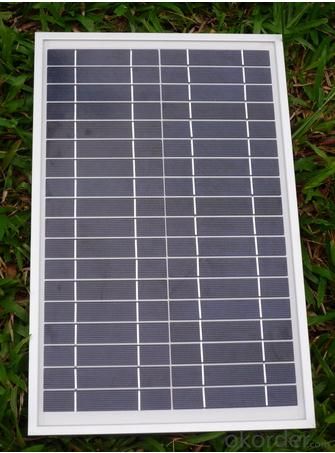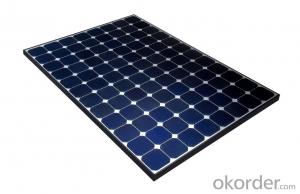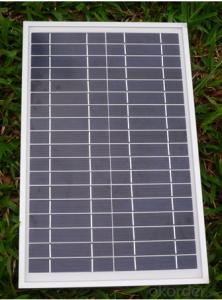110KW CNBM Monocrystalline Silicon Panel for Home Using
- Loading Port:
- Tianjin
- Payment Terms:
- TT OR LC
- Min Order Qty:
- 10 watt
- Supply Capability:
- 1000 watt/month
OKorder Service Pledge
OKorder Financial Service
You Might Also Like
Item specifice
110KW CNBM Monocrystalline Silicon Panel for Home Using
Production description
On 13 April 2006, USA Today reported that there were "some 180,000 families living off-grid, a figure that has jumped 33% a year for a decade," and cited Richard Perez, publisher of Home Power Magazine,[6] as the source.[7] Assuming the same rate of growth, there would be a quarter million off-grid households in the United States by late 2007. Because many Third World citizens have never had the chance to go on the grid, current estimates are that 1.7 billion people live off-grid worldwide.[8] A wave of TV shows and articles came out after the publication of "Off the Grid, Inside the Movement for More Space, Less Government and True Independence in Modern America" by Nick Rosen in 2010.[9]Off-the-grid homes are autonomous; they do not rely on municipal water supply, sewer, natural gas, electrical power grid, or similar utility services. A true off-grid house is able to operate completely independently of all traditional public utility services. The idea has been recently popularized by certain celebrities including Ed Begley, Jr.[1] who stars in Living with Ed[2] television show on the Home & Garden Television (HGTV) network. Actress Daryl Hannahpromotes off-grid living and constructed her home in Colorado according to those principles, as does survival expert and Dual Survival co-star Cody Lundin,[3]who lives in a self-designed, passive solar earth house in the high-desert wilderness of Northern Arizona, collecting rainwater, composting waste, and paying nothing for utilities.[4][5]
The large magnitude of solar energy available makes it a highly appealing source of electricity. The United Nations Development Programme in its 2000 World Energy Assessment found that the annual potential of solar energy was 1,575–49,387 exajoules (EJ). This is several times larger than the total world energy consumption, which was 559.8 EJ in 2012.
Electrical power can be generated on-site with renewable energy sources such as solar (particularly with photovoltaics), wind, micro hydro, geothermal; with agenerator or Micro combined heat and power with adequate fuel reserves. Such a system is called a stand-alone power system. In addition, it is possible to simply eliminate electric power such as in Old Order Amish and Old Order Mennonite communities.
Feature
1.High conversion efficiencies resulting in superior power output performance.
2.Outstanding power output even in low light or high temperature conditions
3.Optimized design for ease of soldering and lamination
Physical characteristic
1. Rigorous quality control meets the highest international standards.
2. High-transmissivity low-iron tempered glass, strong aluminium frame.
3. Using UV-resistant silicon.
4. IS09001/14001/CE/TUV/UL
Packaging
26pcs in one carton 6pallets in 20foot container 14pallets in 40 foot container.
- Q:Can solar energy systems be used for powering hospitals?
- Yes, solar energy systems can be used for powering hospitals. Solar power can provide a reliable and sustainable energy source for hospitals, helping to reduce their dependence on the grid and lower their energy costs. Solar panels can be installed on hospital rooftops or in nearby areas to generate electricity that can be used to power various hospital operations and equipment. Additionally, solar energy systems can provide backup power during emergencies or grid failures, ensuring continuous operation of critical medical equipment.
- Q:Can solar energy systems be used for powering off-grid eco-retreats?
- Yes, solar energy systems can definitely be used for powering off-grid eco-retreats. Solar panels can harness energy from the sun and convert it into electricity, providing a sustainable and renewable source of power. These systems can be installed on the rooftops or in open spaces of eco-retreats to generate electricity for lighting, heating, cooling, and other electrical needs. Additionally, solar energy systems can be combined with batteries to store excess energy for use during nighttime or cloudy days, ensuring a consistent power supply. By utilizing solar energy, off-grid eco-retreats can reduce their dependence on fossil fuels and minimize their environmental impact while enjoying a reliable and clean energy source.
- Q:Can solar energy systems be used in powering airports or transportation hubs?
- Yes, solar energy systems can be used to power airports and transportation hubs. Solar power is a renewable and sustainable energy source that can be harnessed through the installation of solar panels. These solar panels can be placed on the roofs of airport buildings, parking lots, or even on the ground surrounding the airport. Solar energy can be used to power various aspects of airports and transportation hubs. For example, solar panels can generate electricity to power lighting systems, security cameras, and other electrical equipment within the airport premises. Solar power can also be used to charge electric vehicles, such as electric buses or airport shuttles, which can help reduce carbon emissions and promote a cleaner transportation system. Furthermore, solar energy systems can provide a reliable backup power source during emergencies or power outages. This is especially crucial for airports, as they need to ensure continuous operations and maintain safety measures at all times. In recent years, several airports around the world have embraced solar energy as a way to reduce their carbon footprint and operating costs. For instance, Cochin International Airport in India became the world's first fully solar-powered airport in 2015. This airport generates more than enough electricity to meet its operational needs and even feeds excess power back into the grid. Overall, incorporating solar energy systems into airports and transportation hubs is not only environmentally friendly but also economically beneficial in the long run. It helps reduce reliance on fossil fuels, lowers energy costs, and contributes to a more sustainable and greener transportation infrastructure.
- Q:Can a solar energy system be integrated with energy storage systems?
- Yes, a solar energy system can be integrated with energy storage systems. In fact, this integration is becoming increasingly popular and important in the renewable energy sector. Energy storage systems, such as batteries, allow excess energy generated by solar panels to be stored for later use when the sun is not shining or during periods of high demand. This helps to address the intermittent nature of solar energy production and ensures a more reliable and continuous power supply. By combining solar energy systems with energy storage, users can reduce their reliance on the grid, increase self-consumption of solar energy, and even achieve complete energy independence in some cases. Moreover, this integration is crucial for the advancement of sustainable and resilient energy systems, as it enables the integration of renewable energy sources into the grid and smooths out fluctuations in energy supply and demand.
- Q:How often do solar panels need to be cleaned or maintained?
- Solar panels typically require very little maintenance. They should be cleaned at least once or twice a year to remove any dirt, debris, or dust that may accumulate on the surface. However, the frequency of cleaning may vary depending on the location and environmental factors. Regular inspection for damage or obstructions is also recommended to ensure optimal performance.
- Q:Can a solar energy system be used to power outdoor lighting?
- Yes, a solar energy system can be used to power outdoor lighting. Solar panels collect and convert sunlight into electricity, which can be stored in batteries and used to power outdoor lights during the night. This offers an environmentally-friendly and cost-effective solution for outdoor lighting.
- Q:What is a solar battery?
- A solar battery is a device that stores the excess energy generated by solar panels during the day for later use. It allows for the utilization of solar power even when the sun is not shining, ensuring a constant and reliable energy supply.
- Q:Can solar energy systems be used in areas with limited access to clean water?
- Yes, solar energy systems can certainly be used in areas with limited access to clean water. Solar energy is independent of water availability and can be harnessed in regions where clean water is scarce. Solar panels generate electricity by converting sunlight into energy, which can be used to power various applications such as water pumps, filtration systems, and desalination plants. These systems can help provide clean water solutions, making solar energy a viable and sustainable option for areas facing water scarcity.
- Q:Can solar energy be used for hot water?
- Yes, solar energy can be used for heating water through the use of solar thermal systems. These systems typically consist of solar panels that absorb sunlight and convert it into heat, which is then used to heat water for various applications such as domestic hot water or space heating.
- Q:How does a solar energy system work?
- A solar energy system works by harnessing the power of the sun through solar panels, which consist of photovoltaic cells. These cells convert sunlight into direct current (DC) electricity. The DC electricity is then converted into alternating current (AC) through an inverter, making it suitable for use in homes and businesses. The electricity generated by the solar panels can be used immediately, stored in batteries for later use, or fed back into the grid. This renewable energy system helps reduce reliance on fossil fuels and contributes to a cleaner and more sustainable energy source.
1. Manufacturer Overview |
|
|---|---|
| Location | |
| Year Established | |
| Annual Output Value | |
| Main Markets | |
| Company Certifications | |
2. Manufacturer Certificates |
|
|---|---|
| a) Certification Name | |
| Range | |
| Reference | |
| Validity Period | |
3. Manufacturer Capability |
|
|---|---|
| a)Trade Capacity | |
| Nearest Port | |
| Export Percentage | |
| No.of Employees in Trade Department | |
| Language Spoken: | |
| b)Factory Information | |
| Factory Size: | |
| No. of Production Lines | |
| Contract Manufacturing | |
| Product Price Range | |
Send your message to us
110KW CNBM Monocrystalline Silicon Panel for Home Using
- Loading Port:
- Tianjin
- Payment Terms:
- TT OR LC
- Min Order Qty:
- 10 watt
- Supply Capability:
- 1000 watt/month
OKorder Service Pledge
OKorder Financial Service
Similar products
New products
Hot products
Related keywords




























